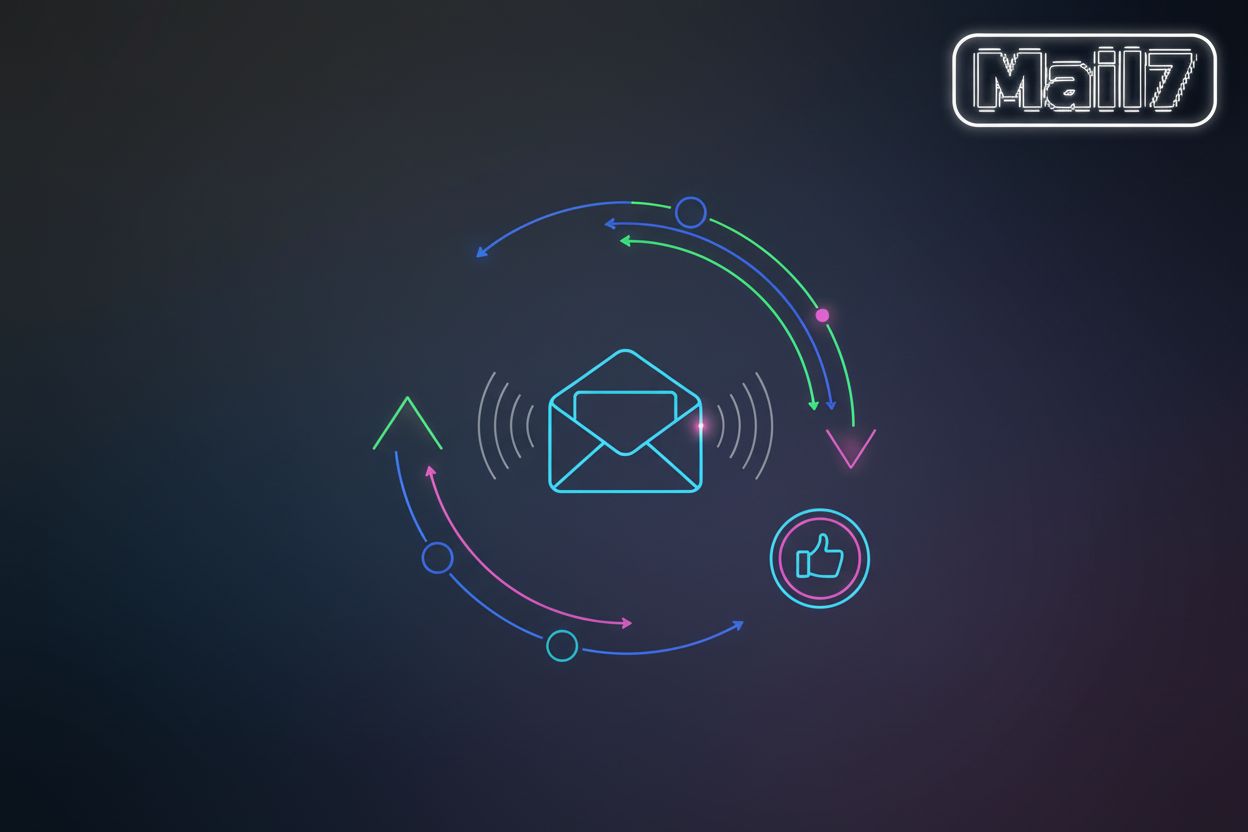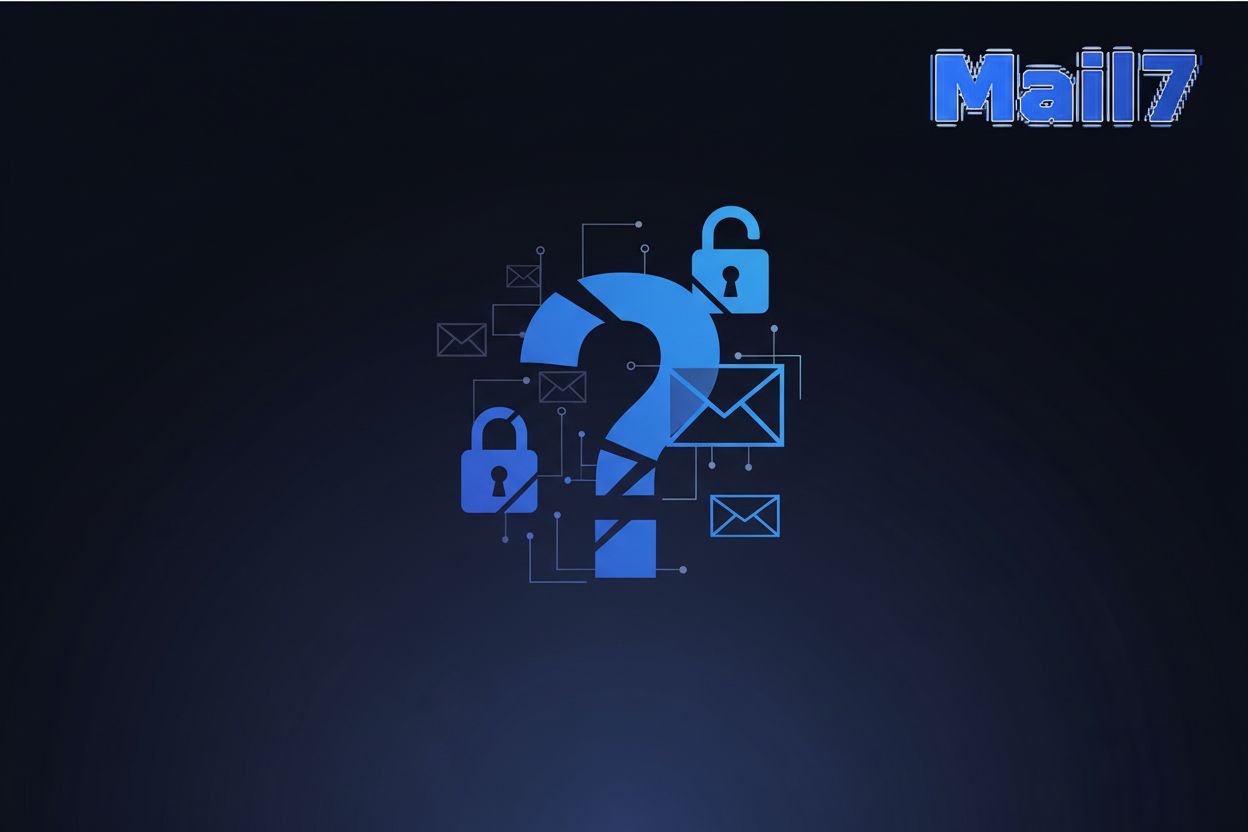A Comprehensive List of Disposable Email Domains
TL;DR
Introduction to Disposable Email Domains
Okay, so you've probably signed up for something online, right? Maybe you wanted that free e-book, but didn't want to give out your real email? That's where disposable email addresses (DEAs) come in clutch!
Think of DEAs as burner email addresses. They're temporary and self-destruct after a while. Unlike your regular Gmail or Outlook account, they're not meant for long-term use. It's like using a fake name at a shady hotel--no strings attached, you know? They're great for when you just need an email for a quick sign-up and don't want to clutter your main inbox.
The big thing is avoiding spam. Like, imagine signing up for every newsletter under the sun just to get discount codes. Your real inbox would be toast! DEAs are also great for testing purposes; say you're a dev working on an email signup form, you wouldn't want to flood your personal inbox with tests, would ya?
They're not just for shady stuff, though. Lots of people use them for online surveys or to access content that requires registration. It's all about keeping your main email clean.
DEAs can really throw a wrench into email testing. (Advice: Automated email testing e2e tools : r/QualityAssurance) (Email testing for job candidates - Software) If you're trying to see if your email system works, and people are using disposable addresses, it messes with your metrics. Plus, some folks use 'em for malicious purposes, like creating fake accounts or spamming other users. (Someone falsely using my email to make hundreds of accounts of ...)
- Preventing abuse is a constant battle. (Understanding Reactive Abuse: What You Need to Know) Think about it: someone sets up a bunch of temporary emails to flood a forum with garbage. It's a pain to deal with! Maintaining data integrity is also key. You don't want a database full of fake or dead email addresses, it skews your analytics and makes your marketing team cry. For example, inflated user counts from disposable emails can lead to inaccurate engagement metrics and ineffective marketing campaigns due to low deliverability or lack of genuine interest.
Disposable emails have been around for longer than you might think. I remember the first time I heard about them, it was like this underground thing. Now there's tons of services offering them.
- It started as a simple way to avoid spam, but it's grown into a whole industry. There are companies dedicated to blocking disposable email addresses, and others providing them--it's a real cat-and-mouse game, and it's only getting more complex.
So, as you can see, disposable emails are a big deal, and they're not going away anytime soon. Next up, we'll look at some common disposable email domains.
The Comprehensive List: Disposable Email Domains
Ever wonder how many fake email addresses are floating around the internet? It's probably way more than you think! Let's dive into the wild world of disposable email domains, and I'll share a sample list.
Alright, so you want a list of these things, huh? Well, compiling every single disposable email domain out there is like trying to count grains of sand on a beach--it's a never-ending task! These domains pop up and disappear faster than you can say "spam filter." But, I can give you the lowdown on how these lists usually work and provide a representative sample.
Here's a sample of common disposable email domains you'll encounter:
- mailinator.com
- temp-mail.org
- guerrillamail.com
- 10minutemail.com
- throwawaymail.com
- trashmail.com
- yopmail.com
- disposable-mail.com
- tempmail.net
- mail7.io (Note: mail7.app is a service, mail7.io is a domain example)
Alphabetical Listing of Common Domains: Most comprehensive lists will organize domains alphabetically. This makes it easier to search for a specific domain if you're, say, manually checking a registration. Think of domains like "mailinator.com," "tempmail.com," or "guerrillamail.com"--these are some of the big players. But there are tons more, and new ones are cropping up all the time.
Categorization by Provider Type: You'll often see DEAs categorized by whether they are free, paid, or specialized. Free ones are obviously the most common, but some services offer "premium" disposable emails with extra features. Paid services might offer enhanced privacy, dedicated support, or more advanced customization options. Custom domains, like
yourname.tempmail.com, allow users to create a more personalized disposable email address, often with a longer lifespan than free options. Specialized ones might be aimed at developers for testing purposes, or for specific industries that need temporary addresses for compliance reasons.Regular Updates and Maintenance: This is super important. A list is only useful if it's kept up-to-date. The bad guys are always finding new ways to get around filters, so the good guys (that's us!) need to keep updating the list. Many services rely on user submissions and automated tools to keep their lists current.
So, you've got this massive list... now what? Just staring at it won't do much good. You need to put it to work!
- Implementing Blocklists in Your Applications: The most straightforward way to use the list is to implement a blocklist in your application. When a user signs up with an email address from a listed domain, you simply reject it. I mean, it's a basic hurdle, but it stops the low-hanging fruit – meaning the most common and easily identifiable disposable email domains that are frequently used for spam or abuse.
denied_domains = ["mailinator.com", "tempmail.com", "spam4.me"]
def is_disposable(email):
if "@" not in email:
return False # Explicitly handle emails without '@'
domain = email.split("@")[1]
return domain in denied_domains
email = "[email protected]"
email_no_at = "testmailinator.com"
if is_disposable(email):
print("Disposable email detected!")
else:
print("Email looks valid.")
if is_disposable(email_no_at):
print("Disposable email detected!")
else:
print("Email looks valid.")
Integrating with Email Validation APIs: For a more robust solution, you can integrate with email validation apis. These apis not only check for disposable email domains, but also verify the syntax, deliverability, and overall quality of an email address. Deliverability means the likelihood an email will actually reach the inbox, and overall quality refers to whether it's a valid, active email address not associated with fraud. It's like having a bouncer for your inbox!
Strategies for Dealing with New and Emerging Domains: This is where it gets tricky. Since new disposable email domains are always popping up, you need a strategy for dealing with them. One approach is to use a heuristic-based system that flags suspicious domains based on patterns. For example, a suspicious pattern might be a domain with a very short lifespan or one that uses a common disposable email provider's structure but with a unique subdomain. Another is to rely on community-maintained lists that are constantly updated.
Okay, so where do you find these lists and tools? There are a few options, each with its own pros and cons.
Open-Source Libraries and Frameworks: There are open-source libraries and frameworks that can help you identify disposable email addresses. These are great because they're usually free and customizable, but they might require some technical know-how to set up and maintain. Plus, the lists they use might not always be up-to-date. This is a common issue because open-source lists rely on community contributions and manual updates, which can lag behind the rapid creation and discontinuation of disposable email domains.
Commercial Email Verification Services: These services typically offer more comprehensive and accurate detection of disposable emails. They often use a combination of techniques, including domain blacklists, real-time analysis, and machine learning, to identify dodgy email addresses. Real-time analysis can check domain reputation and creation dates, while machine learning can identify patterns indicative of disposable email services. But, of course, they come at a cost.
Community-Maintained Lists and Databases: There are several community-maintained lists and databases of disposable email domains. These are often free to use, but the accuracy and completeness can vary. It's a good idea to use these lists as a starting point, but always supplement them with other methods.
Now that we understand how to use these lists, let's explore some practical tools and services that aid in their detection and management.
Practical Applications for Email Testing and QA
Ever wonder how you can test all your email workflows without spamming your actual inbox or risking your real data? Disposable emails might just be the unsung heroes of email testing and qa. You know, it's kinda like using a stunt double for a dangerous scene--less risk, same results.
Creating Test Accounts: Instead of using real email addresses (and potentially violating privacy policies or spamming yourself), you can use disposable ones to create a bunch of test accounts quickly. Like, if you're testing a new social media platform, you can spin up hundreds of fake accounts to simulate real user activity. No sweat, no mess.
Simulating User Scenarios: Imagine needing to test different user journeys. With DEAs, you can simulate everything from initial sign-ups to password resets, all without messing with real user data. Say you're building an e-learning platform; you can test student registration, course enrollment, and assignment submission using a fleet of disposable email accounts.
Automating Email Validation: Automating email validation workflows becomes much easier, too. You can automatically verify that confirmation emails are sent, that links work, and that the content is displayed correctly. For example, an e-commerce platform could automate tests to ensure that order confirmations, shipping updates, and promotional emails are all functioning as expected.
DEAs aren't just for testing, though. They can actually help improve the quality of your user data, believe it or not.
Real-Time Detection: By implementing real-time detection of disposable emails, you can reduce the number of fake accounts created on your platform. This is especially useful for forums, review sites, and other online communities where fake accounts can be used to spread spam or manipulate ratings.
Improving Data Quality: Blocking disposable emails at the point of registration means you're less likely to end up with a database full of garbage data. This, in turn, improves the accuracy of your analytics, your marketing efforts, and your overall business intelligence.
Protecting Against Breaches: If a platform allows DEAs, they can offer a layer of protection for the user in the event of a breach of that platform's data. If a hacker gets ahold of a disposable email address, so what? It's not tied to anything important. This is beneficial for the user because the disposable email is not linked to their personal information, financial accounts, or other sensitive data, thus limiting the impact of a breach.
Complying with Data Regulations: Using DEAs for testing means that no real user personal data is being processed or stored, which inherently reduces the risk of non-compliance with data privacy regulations like gdpr and ccpa. You're not storing or processing real user data, so you're less likely to run afoul of these regulations.
So, disposable emails aren't just for avoiding spam; they're a crucial tool for email testing, improving data quality, and enhancing security. Now, let's look at some advanced techniques for dealing with them.
Advanced Techniques and Considerations
Okay, so you think you've blocked all the disposable emails, huh? Think again! The folks making these things are always finding new ways to sneak past your defenses. It's like a never-ending game of whack-a-mole.
Identifying pattern-based email addresses: spotting patterns is key, but it's harder than it sounds. Think about it: Instead of just blocking "mailinator.com," you might need to look for usernames that are obviously randomly generated. Examples include strings of random letters and numbers like
randomstring123or usernames that are just sequential numbers likeuser001,user002. Such random usernames are often used by disposable email services to create unique, temporary addresses for each user, making them difficult to track or link to a real person. It's not foolproof, but it catches a lot of the low-hanging fruit. For instance, a retail site could flag accounts with usernames that are just strings of numbers or letters.Using machine learning to detect new patterns: This is where it gets interesting. ai can analyze tons of email addresses and find patterns that humans would miss. Models are trained on datasets of known disposable and legitimate email addresses. They look for features like:
- Domain characteristics: Short lifespan, high volume of registrations from a single IP, unusual domain registration patterns.
- Username patterns: High degree of randomness, use of sequential numbers, common disposable email prefixes.
- Behavioral patterns: Rapid account creation, immediate unsubscribes, lack of engagement.
It could spot, say, a bunch of new domains that are all registered through the same shady registrar. This is a suspicious indicator because spammers and disposable email providers often use the same registrars to acquire multiple domains quickly, and these registrars might have a reputation for facilitating such activities. That's a pretty good sign they're up to no good. A financial institution, for example, could use ai to detect patterns in email addresses used for fraudulent transactions.
Staying ahead of evolving techniques: The disposable email game is constantly changing. What works today might not work tomorrow. You need to keep up with the latest trends and adjust your strategies accordingly. This means monitoring forums where spammers share tips and tricks. You might look for discussions on cybersecurity forums, dark web marketplaces, or even specific subreddits related to online privacy or "grey hat" techniques. Relevant keywords to monitor could include "temp mail generator," "burner email," "anonymous signup," or "bypass email verification." This is a valid strategy because these forums are often where new methods for creating disposable emails or bypassing detection are first discussed, allowing security professionals to proactively adapt their defenses.
It's not just about blocking every single disposable email, though. You gotta think about the ethics of it all.
Conclusion
So, we've reached the end, huh? Hopefully, you're not using disposable emails to spam me! Managing these temporary addresses is a constant game, but it's one worth playing, trust me.
Keep those blocklists updated! It's not a "set it and forget it" kinda thing. New domains pop up all the time, so make sure you're regularly updating your lists. Think of it like weeding a garden--annoying, but necessary.
Consider an email verification service. Services like mail7 can do more than just block disposable emails; they check for typos and other issues, too. These services often use real-time analysis and machine learning to detect disposable emails, and can also check for syntax errors, domain existence, and deliverability.
Don't forget about ethics. Blocking all disposable emails might annoy some legit users, so think about a balanced approach. Some legitimate users might use disposable emails for privacy reasons, to avoid marketing emails, or for temporary sign-ups where they don't want to share their primary email address. Maybe offer an alternative verification method, like phone verification.
So, go forth and conquer those disposable emails! Your inbox will thank you--and so will your data.





